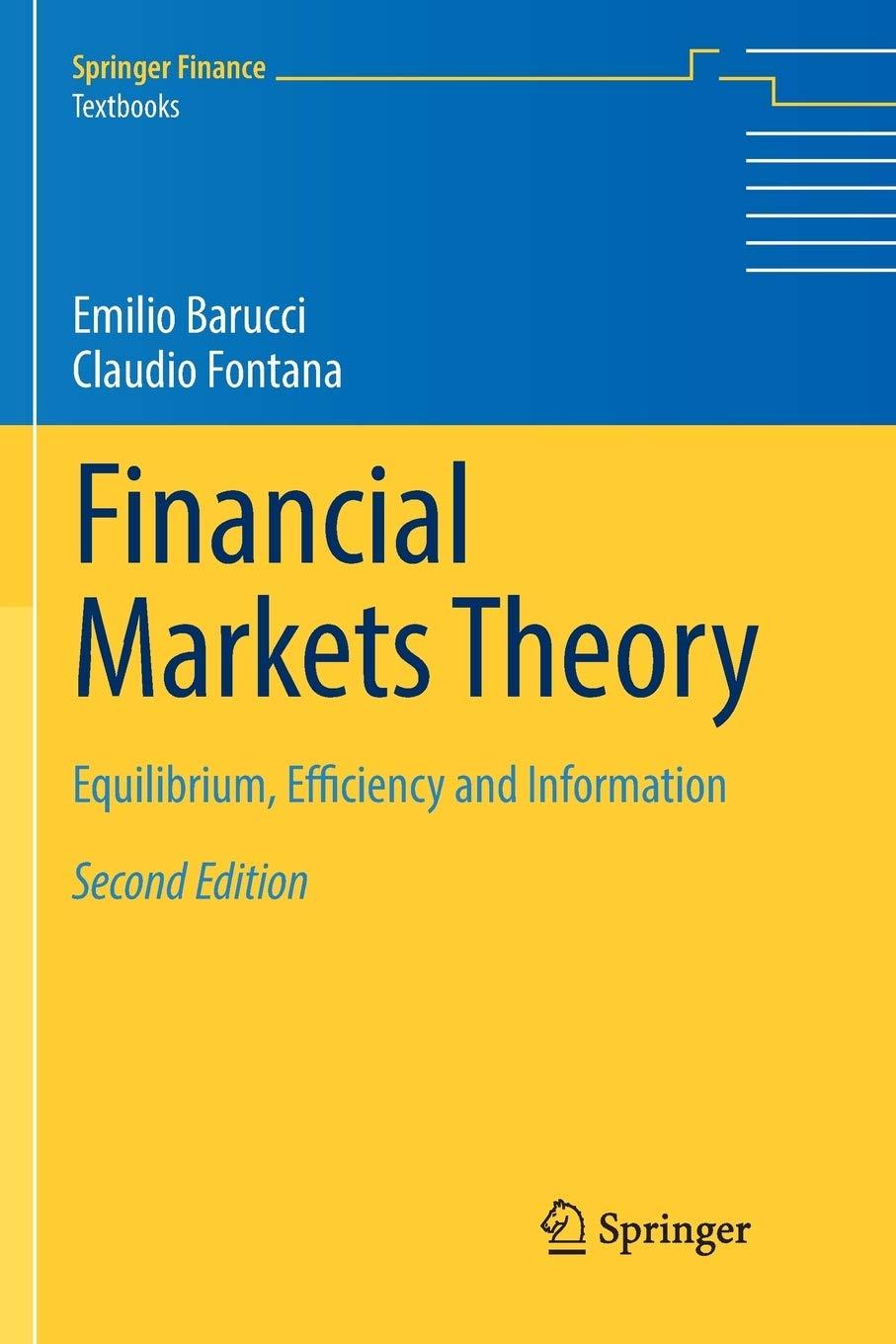In this exercise, taken from De Jong & Rindi [540, Section 5.2.1] and related to the models
Question:
In this exercise, taken from De Jong \& Rindi [540, Section 5.2.1] and related to the models discussed in Sect. 10.3, we present a simple model of an economy where several risk averse dealers operate. Consider an economy where a single risky asset with liquidation value \(\tilde{d}\) is traded. It is assumed that \(\tilde{d} \sim \mathscr{N}\left(\bar{d}, \sigma_{d}^{2}\right)\). Suppose that the economy is populated by the two following types of agents:
- \(M\) risk averse dealers submitting limit orders to the market, with each dealer \(m \in\{1, \ldots, M\}\) being endowed with \(E_{m}\) units of the asset. The utility function of each dealer is assumed to be negative exponential, with a common risk aversion parameter \(a\).
- \(\quad N\) liquidity traders, submitting market orders. The aggregate demand of liquidity traders is represented by the random variable \(\tilde{z}\), supposed to be normally distributed with mean \(\bar{z}\) and variance \(\sigma_{z}^{2}\).
(i) For each \(m \in\{1, \ldots, M\}\), let \(X_{m}: \mathbb{R} \rightarrow \mathbb{R}\) represent the demand schedule of the \(m\)-th dealer, representing the number of units of the asset demanded as a function of the current market price. Show that
\[X_{m}(\tilde{p})=\frac{\bar{d}-\tilde{p}}{a \sigma_{d}^{2}}-E_{m}, \quad \text { for every } m=1, \ldots, M\]
(ii) By imposing market clearing, deduce that the equilibrium price \(p\) satisfies
\[\tilde{p}=\left(\frac{\tilde{z}}{M}-\bar{E}\right) a \sigma_{d}^{2}+\bar{d}\]
where \(\bar{E}:=\sum_{m=1}^{M} E_{m} / M\), with the consequence that the bid and ask prices associated to an aggregate quantity \(z\) traded by liquidity traders are given by
\[\begin{aligned}
p^{\text {ask }}=\bar{d}-\bar{E} a \sigma_{d}^{2}+\frac{a \sigma_{d}^{2}}{M}|z|, & & \text { if } z>0, \\
p^{\text {bid }}=\bar{d}-\bar{E} a \sigma_{d}^{2}-\frac{a \sigma_{d}^{2}}{M}|z|, & & \text { if } z<0, \end{aligned}\]
with a bid-ask spread given by \[p^{\text {ask }}-p^{\text {bid }}=\frac{2 a \sigma_{d}^{2}}{M}|z|\]
Observe that the term \(a \sigma_{d}^{2} / M\) represents the price impact of a trade: the greater the dealers' risk aversion and the volatility of the asset, the greater the price impact. Increasing the number \(M\) of dealers leads to a reduction of the price impact.
(iii) By using the results established in steps (i)-(ii) of the exercise, show that the quantity traded by each dealer is given by \[x_{m}^{*}=\bar{E}-E_{m}-\frac{z}{M}\]
where \(z\) is the realization of the random variable \(\tilde{z}\).
Step by Step Answer:

Financial Markets Theory Equilibrium Efficiency And Information
ISBN: 9781447174042
2nd Edition
Authors: Emilio Barucci, Claudio Fontana





